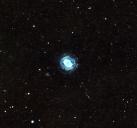Howdy, Stranger!
It looks like you're new here. If you want to get involved, click one of these buttons!
In this Discussion
Why does my image look so different
Hello Adam
I'm relatively new to narrowband imaging. I recently imaged M57 and processed the image using the workflow techniques you published earlier this month. When I finished processing the image I went to Astrobin to see how my image compared to what others had done. I was surprised to find that my image stood out as an exception. Leaving me wondering why? I reran WBPP and performed the basic image processing steps and came up with the same result. Going back to Astrobin and digging a bit deeper I discovered, in part, why my image was different. My image clearly shows galaxy IC 1296. only a handful of M57 images on Astrobin showed this galaxy. Those that did, looked somewhat similar to mine. What they had in common was relatively long integration times.
The second part of my question relates to the actual processing steps/techniques you outline in your workflow. All the images I found on Astrobin that looked similar to mine were actually quite different in detail and color. Obviously no two people will process an image the same way. In my case I'm just getting started and want to create a basic workflow that I can build upon as I gain more experience. Can you provide me a bit of guidance on how I can, shall we say, build upon your workflow.
I live in SoCal in a Bortle 6 area. I also have to contend with a street light that is located directly adjacent to my back yard. That said, even with a full moon I can successfully image in narrowband. Our weather is relatively mild year round thus supporting long integration times. Of course I'm repeatedly asking myself how much integration time is really enough.
M57
Image Integration times
H 3nm -106 frames 240s (7hr 4min)
O 3nm -117 frames 240s (7hr 48min)
S 3nm -99 frames 240s (6hr 36min)
Equipment
TEC AP140 Telescope
ASI 533mm Camera
AM5 Mount
Thanks
Jerry


M57.jpg
1891 x 1770 - 2M

Comments